It’s November and the long-threatening winter has arrived. Autumn proved to be sweet but short lived.
The Boston ivy never got a chance to turn scarlet as about 70% of its leaves dropped over two nights. The beech hedges are looking well and are mostly still green.
While I love the crunch of dry leaves under foot, it’s a different matter when the fallen leaves are saturated and slippy.
This is where having a good, lightweight leaf blower makes sense. Not only does it keep everything nice and tidy, it ensures that we have a great pile of leaf mould for mulching the flower beds.
The garden is looking a bit sad with the skeleton branches of trees the dominant feature. Flowers are scarce except for alstroemerias and kaffir lilies. The latter has an impossibly unpronounceable name – schizostylis. It’s a lovely vibrant pink colour and flowers from September to February. It is easy to propagate by rhizome division when the flowers have gone over. It performs best in damp but not waterlogged soil and in full sun.
Minding tender plants
We’ve had no frost so the blessed nasturtiums are still going strong. We transferred the osteospermans, Chinese lanterns (physalis) and abutilons indoors to save them from the bad weather. The dahlias will be well mulched and that should be enough to keep them safe.

Liquid amber trees do well in acidic soil, however variety ‘worplesdon’ does well in limey conditions.
I don’t know how we are going to manage the echiums. For the past two years we have successfully nurtured 20 echiums to a mature stage. However, only one was mature enough to flower this year. If we can keep them alive this winter and they all flower next year they will be a sight to behold.
They are self-seeded and to be honest they couldn’t have chosen a worse place to grow. They face east and are up against the prevailing westerly winds. Last winter, we wrapped them in fleece when heavy frost was forecast and where we did that, they all survived. But now they are much taller and stronger so I don’t think the fleece will work. But we shall see.
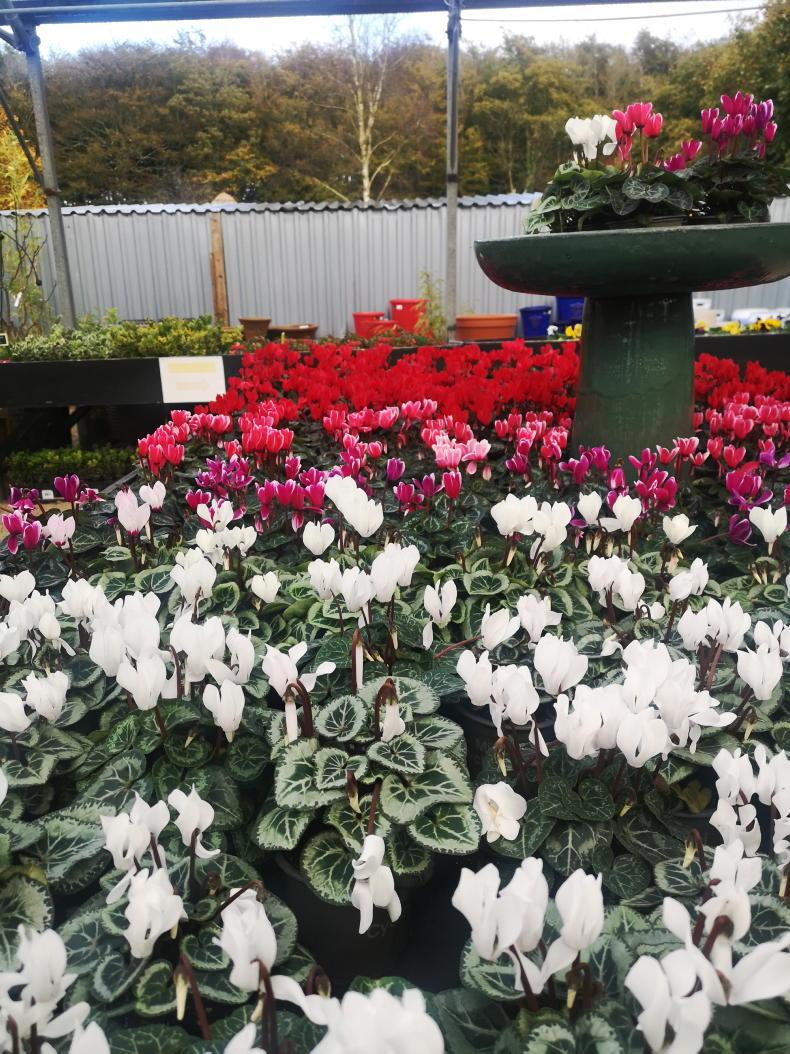
Cyclamen provide plenty of colour into spring.
While November is a time to close down the garden it is also time to think ahead to next spring. The green shoots of spring bulbs are already bursting through the soil and it’s only a matter of weeks before the first snowdrops appear.
Keep fallen leaves picked up as left on the ground they can pose a danger to older people who are at risk of falling
Get the last of your spring bulbs into the ground. There’s still time for daffodils and if the ground is wet then tulips can be held until January. I found a neat aid for planting spring bulbs where different bulbs can be emptied onto an open planting tray which the roots can grow through. All you have to do is cover them with soil. They are perfect for pots or for creating spots of colour in flower beds. A 30 bulb pack of daffodils, tulips and muscari costs €11.50.
I recently paid a visit to my local garden centre and was surprised to see a forest of tree ferns for sale. Surely these exotic southern hemisphere plants were too delicate for our side of the country. Not so, says Ray Conway who owns and has developed the four acre Curraghchase Garden Centre for the past 16 years.
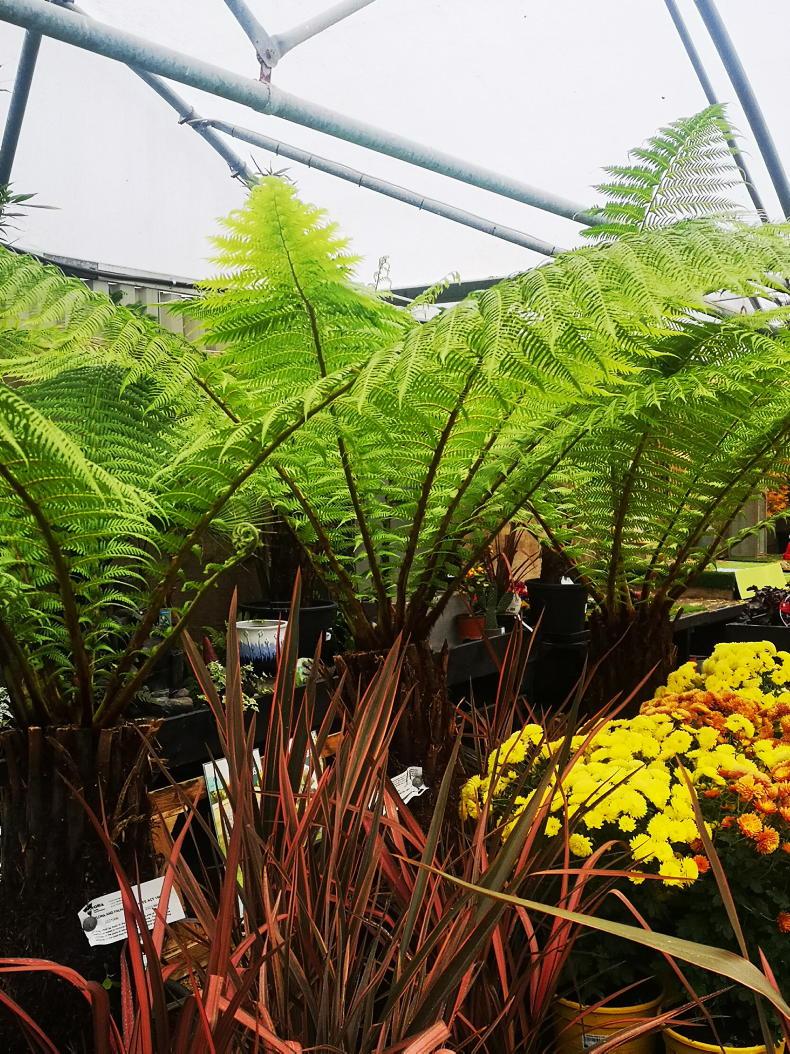
“Prior to 2010 we used to sell a wide range of these plants including Canary Island Date Palms. Then we got hit on the double by the recession and two winters where the snow covered the ground for weeks on end. The weather killed off many of these southern hemisphere plants and after that bruising loss, all customers wanted to know when buying a plant, was, would it survive heavy frost.’
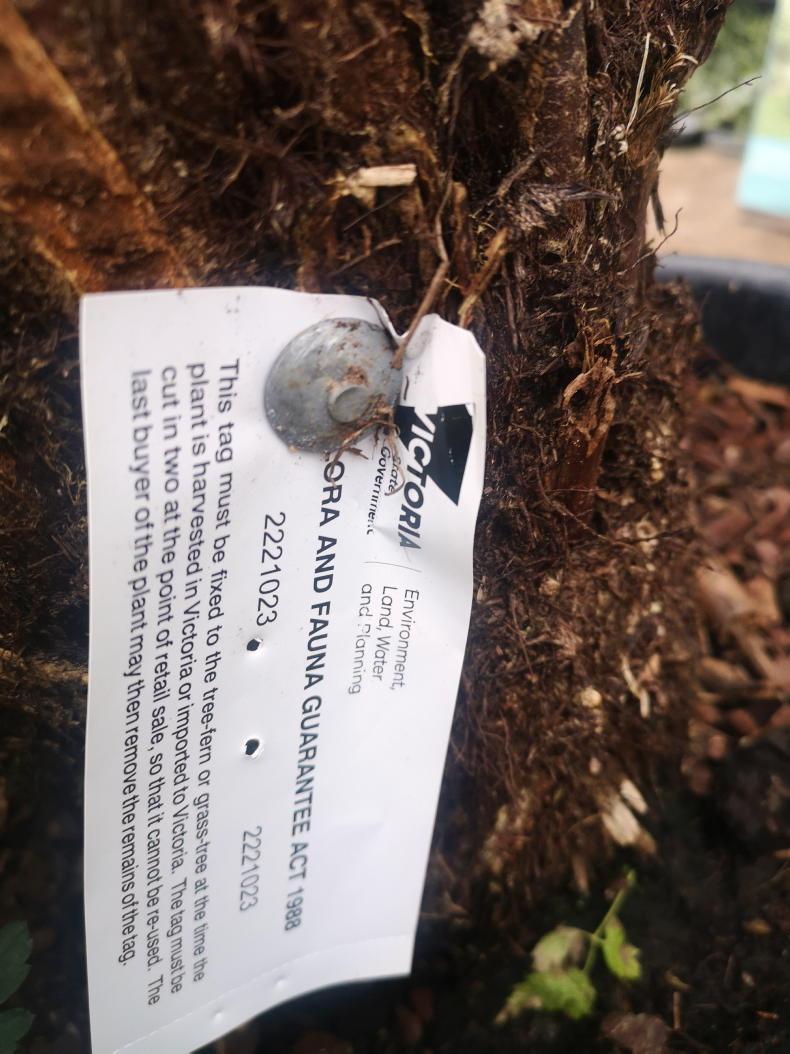
Ray says tree ferns will thrive if given the correct care. “In summer, it’s not enough to water the base of the plant, the whole stump requires regular watering. Rain water is best and a low-nitrogen feed is good too. The fronds will die back but if well sheltered will continue to appear in summer.”
In winter, Ray recommends wrapping the trunk in horticulture fleece and pushing it into the crown which has to be protected. “Many of the tree ferns we sell are over 20 years old and they do very well in pots, once they are kept watered. They need to be kept out of the wind and they grow well in light shade.”

When buying a tree fern make sure it has a tag that certifies it has been harvested from a designated area. Prices range from €100 upwards.
According to Ray, Brexit continues to be a real issue for garden centres.
“Shipping costs are an increasing problem. Many of our suppliers in Holland, Germany and the rest of mainland Europe used arrive here via the UK. But now the paperwork takes forever and is not consistent and suppliers are switching to coming direct from France.”
Ray says that ceramics and garden sundries that used to be wholesaled and distributed through the UK are now being held for the UK market.
On the bright side he says COVID-19 has helped the sector. “People have had the time to understand and appreciate their gardens. They have put in the infrastructure to deal with our Irish weather and they will make use of their outdoor space.”
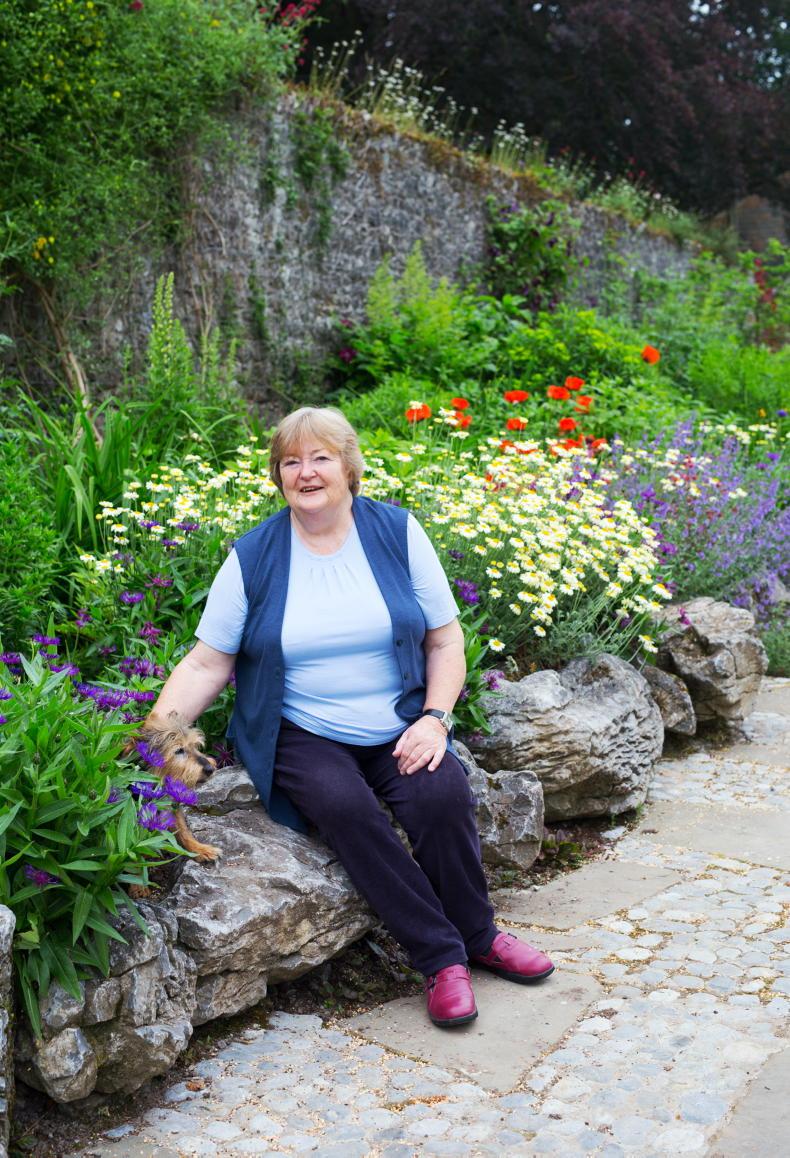
Generous to the end, the late Angela Jupe.
Keen gardeners and rare plant enthusiasts will be happy to hear that the wonderful Angela Jupe has bequeathed her home and gardens at Bellefield House to the Royal Horticultural Society of Ireland (RHSI). As a regular visitor to Shinrone, I was the recipient of her generous time and boundless knowledge and I was very sorry to learn of Angela’s death last May. According to reports, Angela hoped the gardens would remain open to the public and the RHSI plan to honour her wishes in this regard. May she rest in peace.
It’s November and the long-threatening winter has arrived. Autumn proved to be sweet but short lived.
The Boston ivy never got a chance to turn scarlet as about 70% of its leaves dropped over two nights. The beech hedges are looking well and are mostly still green.
While I love the crunch of dry leaves under foot, it’s a different matter when the fallen leaves are saturated and slippy.
This is where having a good, lightweight leaf blower makes sense. Not only does it keep everything nice and tidy, it ensures that we have a great pile of leaf mould for mulching the flower beds.
The garden is looking a bit sad with the skeleton branches of trees the dominant feature. Flowers are scarce except for alstroemerias and kaffir lilies. The latter has an impossibly unpronounceable name – schizostylis. It’s a lovely vibrant pink colour and flowers from September to February. It is easy to propagate by rhizome division when the flowers have gone over. It performs best in damp but not waterlogged soil and in full sun.
Minding tender plants
We’ve had no frost so the blessed nasturtiums are still going strong. We transferred the osteospermans, Chinese lanterns (physalis) and abutilons indoors to save them from the bad weather. The dahlias will be well mulched and that should be enough to keep them safe.

Liquid amber trees do well in acidic soil, however variety ‘worplesdon’ does well in limey conditions.
I don’t know how we are going to manage the echiums. For the past two years we have successfully nurtured 20 echiums to a mature stage. However, only one was mature enough to flower this year. If we can keep them alive this winter and they all flower next year they will be a sight to behold.
They are self-seeded and to be honest they couldn’t have chosen a worse place to grow. They face east and are up against the prevailing westerly winds. Last winter, we wrapped them in fleece when heavy frost was forecast and where we did that, they all survived. But now they are much taller and stronger so I don’t think the fleece will work. But we shall see.

Cyclamen provide plenty of colour into spring.
While November is a time to close down the garden it is also time to think ahead to next spring. The green shoots of spring bulbs are already bursting through the soil and it’s only a matter of weeks before the first snowdrops appear.
Keep fallen leaves picked up as left on the ground they can pose a danger to older people who are at risk of falling
Get the last of your spring bulbs into the ground. There’s still time for daffodils and if the ground is wet then tulips can be held until January. I found a neat aid for planting spring bulbs where different bulbs can be emptied onto an open planting tray which the roots can grow through. All you have to do is cover them with soil. They are perfect for pots or for creating spots of colour in flower beds. A 30 bulb pack of daffodils, tulips and muscari costs €11.50.
I recently paid a visit to my local garden centre and was surprised to see a forest of tree ferns for sale. Surely these exotic southern hemisphere plants were too delicate for our side of the country. Not so, says Ray Conway who owns and has developed the four acre Curraghchase Garden Centre for the past 16 years.

“Prior to 2010 we used to sell a wide range of these plants including Canary Island Date Palms. Then we got hit on the double by the recession and two winters where the snow covered the ground for weeks on end. The weather killed off many of these southern hemisphere plants and after that bruising loss, all customers wanted to know when buying a plant, was, would it survive heavy frost.’

Ray says tree ferns will thrive if given the correct care. “In summer, it’s not enough to water the base of the plant, the whole stump requires regular watering. Rain water is best and a low-nitrogen feed is good too. The fronds will die back but if well sheltered will continue to appear in summer.”
In winter, Ray recommends wrapping the trunk in horticulture fleece and pushing it into the crown which has to be protected. “Many of the tree ferns we sell are over 20 years old and they do very well in pots, once they are kept watered. They need to be kept out of the wind and they grow well in light shade.”

When buying a tree fern make sure it has a tag that certifies it has been harvested from a designated area. Prices range from €100 upwards.
According to Ray, Brexit continues to be a real issue for garden centres.
“Shipping costs are an increasing problem. Many of our suppliers in Holland, Germany and the rest of mainland Europe used arrive here via the UK. But now the paperwork takes forever and is not consistent and suppliers are switching to coming direct from France.”
Ray says that ceramics and garden sundries that used to be wholesaled and distributed through the UK are now being held for the UK market.
On the bright side he says COVID-19 has helped the sector. “People have had the time to understand and appreciate their gardens. They have put in the infrastructure to deal with our Irish weather and they will make use of their outdoor space.”

Generous to the end, the late Angela Jupe.
Keen gardeners and rare plant enthusiasts will be happy to hear that the wonderful Angela Jupe has bequeathed her home and gardens at Bellefield House to the Royal Horticultural Society of Ireland (RHSI). As a regular visitor to Shinrone, I was the recipient of her generous time and boundless knowledge and I was very sorry to learn of Angela’s death last May. According to reports, Angela hoped the gardens would remain open to the public and the RHSI plan to honour her wishes in this regard. May she rest in peace.











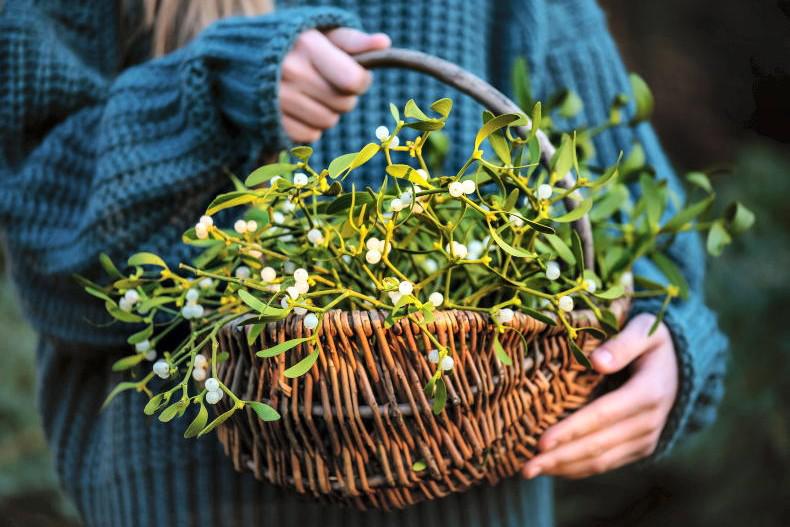
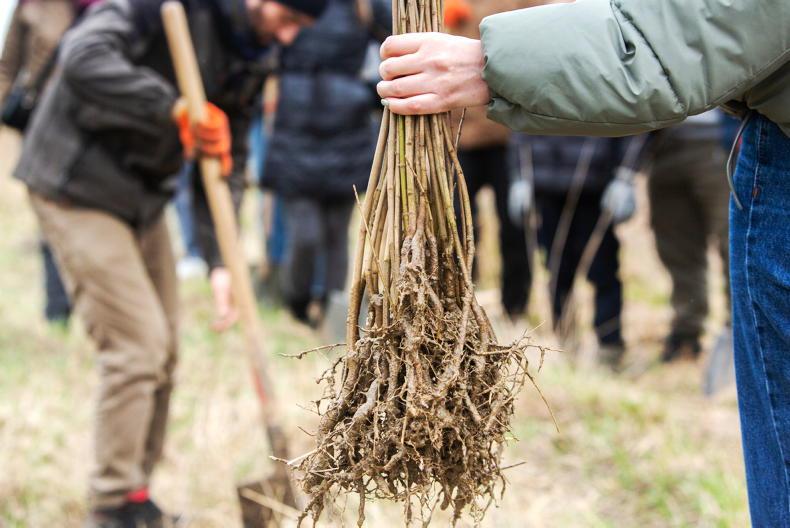


SHARING OPTIONS